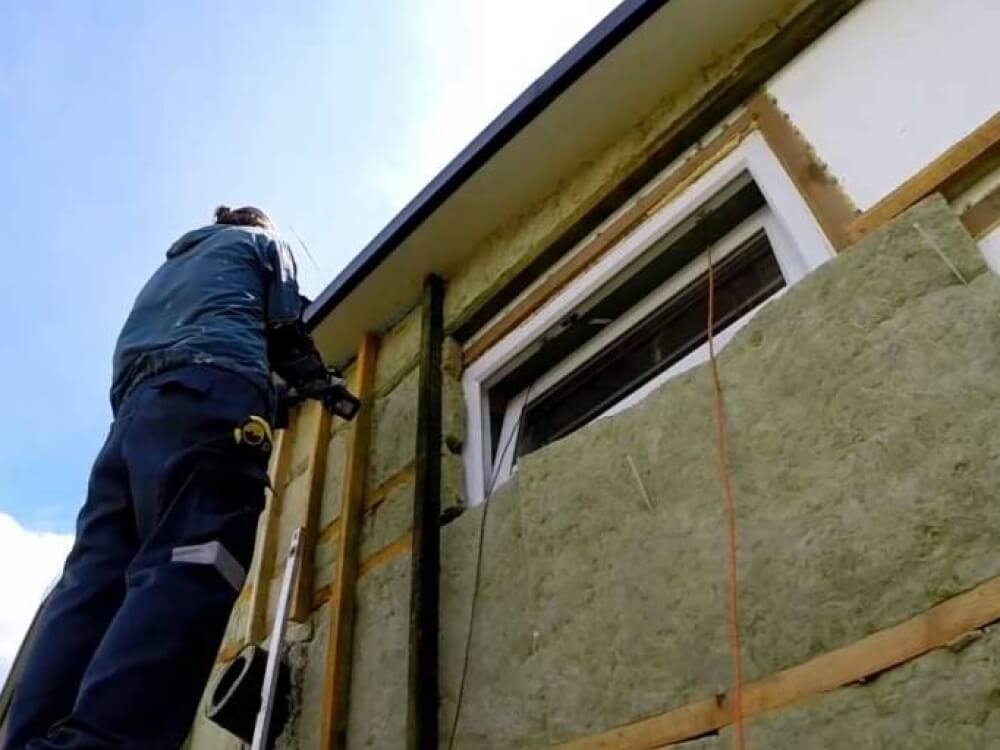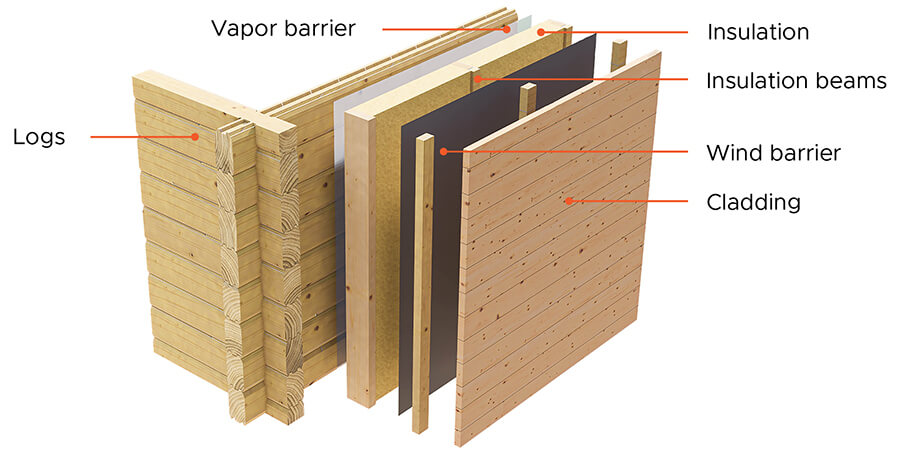Wood retains heat well, provides a favourable indoor microclimate and has an gorgeous design. However, in some cases, the insulating properties of the material is not enough, so the insulation of the house becomes a necessity. Walls are responsible for about 20% of heat loss in a house. Insulating walls from the exterior enables them to accumulate and retain heat. Using insulants over a wood frame construction will limit the inflow of cold air in winter and improve the thermal performance of your building. Furthermore, you will also improve the acoustic performance and the ambient temperature in the summer.
Although there are many ways to insulate a wooden house, the most common and quite popular is insulation with polyester foam. When insulating a summer house in this simple way, special polyester panels are attached directly to the wood. However, although due to its simplicity, this method is gaining great popularity, according to experts, it is not an option that will ensure the highest insulation quality due to the airtightness of the polyester material.
Due to its exceptional quality, polyurethane is a material in demand for home insulation. It is known for high elasticity which is important to thermal insulation.
Insulation with mineral stone wool could be another, much better quality than polyester foam method. However, it is important to take into account that using this method will additionally require a polyethylene film to help absorb water vapor that is harmful to the wall.
Whatever method of insulation you choose, it is important to pay attention to the coefficients of heat transfer U and thermal resistance R. The heat transfer criterion will allow the assessment of thermal insulation or the amount of heat that can penetrate through the insulation material partition. The lower the U value, the less heat will penetrate. Looking at the coefficient of thermal resistance, the higher the resistance, the warmer the partition.

Before starting a wall insulation, it should be assessed that insulating wooden walls won’t not be cheap not fast, and the result of such process will depend the most on the quality of the materials used for insulation.
Depending on the specifications of each house, specific things can be important for the insulation process of an individual house. However, perhaps the most important thing to consider before insulating walls is that it will settle for at least a few years. In this case, it is very likely that glued polystyrene, foam or other materials will be damaged if the house is insulated immediately after its construction. According to practice, the walls of a wooden house usually sit on about 2-3 % of the wall height, so this distance should be taken into account when doing insulation work. For example, if the wall of a house is 4.5 m high, its height will decrease by about 10 cm after settling. For this reason, when building a new house, it is recommended to wait for it to settle, but if this is not possible, it is necessary to consult with an insulation expert.
Another important aspect of insulating the walls of a wooden house is that it is recommended to carry out all possible insulation works from the outside, as insulation from the inside is not very practical. In order to insulate the interior walls of a house that has already been built well, it is very often necessary to dismantle the floor, and if the work is not performed to a high standard, such a process also creates a great medium for breeding rodents or mold. Insulating a house in this way also reduces the temperature load on its walls - the wall temperature remains stable all year round.
With regard to the choice of materials to be used for insulation, as mentioned above, there are a number of possible material options. However, when choosing an insulation material, we most recommend to pay attention to the fact that the material used is vapor permeable - "breathable", it is not blown by wind, the material does not accumulate moisture, as well as it is resistant to the growth of microorganisms. Also pay attention to the thermal conductivity coefficient - the lower the coefficient, the less insulation materials will be needed, and the conductivity will eventually affect heating costs.

As we mentioned earlier in this article, windows and doors account for as much as 25% and sometimes as much as 30% of heat loss, so when investing in home insulation, by no means pay a hand in sealing windows and doors.
Probably the most popular and high thermal insulation option is plastic windows and sealed doors. However, to maintain the authenticity and style of a wooden house, you can increase the thermal insulation in other ways. If we are talking about wooden windows, which are not in very good condition, the option of changing the glass to a thicker one could be considered. It is also not uncommon for older windows that have poor thermal insulation but retain the authenticity of the building to be fitted with shutters, but it goes without saying that in this case the shutters will need to be closed.
Another possible option is to apply a special putty or sealant to the places where the glass is attached to the window frame, and if necessary, the glass framing strip can also be replaced. As long as the outdoor temperature is not below zero, a special insulation tape can also be glued along the entire perimeter of the frames. Cracks in the window frames visible to the naked eye can be plugged using cotton wool, paralon scraps or other heating material.
When it comes to doors, special attention should be paid not only to the front door, but also to all doors that lead to cold rooms or hallways. Here, the main means of insulation could be to plug the cracks between the door frames. If you are faced with a situation where cold air enters the room through the bottom of the door, in this case you can attach special brushes to the bottom of them, which can be bought or made of special rubber yourself.
Another important point is an integrated approach to isolation. Insulate not only the walls, but also the floor and the roof. If there is an unheated attic and basement in the house, then it is more rational to give primary attention to these zones during insulation.
Read about floor insulation "How to insulate wooden house floor"
Read about roof insulation here "Insulating wooden house roof"
